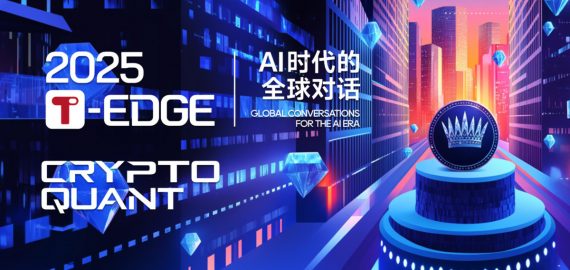7 Ways AI Can Supercharge Prediction Markets In 2025


In Brief
AI is set to transform prediction markets by enhancing forecasting accuracy, automating liquidity and settlements, detecting manipulation, enabling novel event types, and making market insights more accessible, potentially reshaping decision-making across crypto, finance, and governance.

Prediction markets let people buy and sell contracts whose payouts depend on future events—everything from election outcomes to economic indicators.
In crypto, finance, and governance, these tools are increasingly used to aggregate sentiment, hedge risk, and improve decision-making. But as markets mature, AI is poised to amplify their power in several new ways.
Below are seven areas where artificial intelligence could meaningfully supercharge prediction markets in 2025 and beyond.
Better Signal Extraction from News & Social Media
AI-powered natural language processing (NLP) can parse breaking news, social media chatter, forums, and regulatory updates to extract sentiment and detect emerging events.
PredictionSwap.ai, for example, describes itself as an aggregator and AI analysis tool—it ranks edges, “flags mispricings,” and offers rationales drawn from private news feeds and vector databases.
Such tools can enable markets to adjust odds faster. If relevant news breaks out (such as a government policy announcement, a Fed speech, etc.), AI can assist prediction markets in reflecting these changes almost instantly, as opposed to the usual manual research or lagging polls.
Forecast Accuracy Enhancement via Hybrid Human-AI Models
Combining human judgment (crowds, experts) with AI/ML models can materially boost forecast accuracy. Recent scholarship argues that prediction markets and forecasting tournaments, when used alongside AI, don’t just aggregate insight—they can accelerate knowledge creation.
Ryan H. Murphy suggests these mechanisms may represent a “break in the expansion of human knowledge,” likening the epistemic leverage of markets and tournaments to major historical shifts because they channel dispersed information into rapid, usable forecasts.
Empirical work backs this hybrid approach: pooled analyses of forecasting tournaments and replication markets show prediction markets delivering robust accuracy (about 73% accuracy on replication outcomes in pooled studies), often outperforming simple surveys.
That pattern supports combining algorithmic scale with human judgment. Machines surface signals at scale, while humans add context and domain nuance, yielding better-calibrated probabilities than either alone.
Automated Market Making & Liquidity Provision Using AI
Liquidity is one of the biggest challenges for prediction markets. AI can help by dynamically adjusting bid-ask spreads, managing liquidity provision, and reducing slippage.
Platforms like PredictionSwap.ai already monitor odds across multiple markets (e.g. Kalshi + Polymarket), detect mispricings, and provide trade suggestions based on AI-analysis of market and news data.
With smarter market-making algorithms, prediction markets could become more accessible—traders would face lower friction, fewer costs, and wider participation. That, in turn, could sharpen forecasts and improve overall market depth.
Risk Detection & Manipulation Safeguards
Prediction markets are susceptible to unusual activity: wash trading, front-running, or manipulation by large actors. Here, AI can serve as a watchdog. By using anomaly detection, pattern recognition, and fraud detection models, platforms can flag suspicious behavior early.
For example, in the recent xAI-Kalshi partnership, Grok (xAI’s chatbot) will provide real-time analysis of news, sentiment, and economic indicators on events markets, potentially helping traders and platforms discern when odds move for legitimate reasons vs. noise.
These systems are not foolproof, but AI helps build in layers of review—automated alerts, documented sources, and transparency—that make it harder for bad faith actors to distort markets undetected.
Personalized Prediction Market Interfaces & Advisory Agents
Not everyone trading in prediction markets is a full-time data analyst. AI agents can help bridge that gap.
For instance, Grok’s integration with Kalshi will offer users “fast, digestible summaries of complex developments and fluctuations in market prices.” Such tools help non-experts make informed bets, reduce entry friction, and avoid being misled by headline noise.
Olas is one solution that offers “Prediction Agent” modules (in their agent catalog) that use external AI tools to analyze real-time news and data, then automatically place trades or suggest predictions with high confidence.
These advisory layers could broaden participation in prediction markets while helping maintain quality: people make decisions informed both by data and insight.
Forecasting New Event Types Enabled by AI-Generated Data
Some events are hard to forecast simply because data is scarce: algorithm performance, technical ML benchmarks, climate outcomes, or events involving emerging technologies. AI can help generate synthetic or extrapolated data, model forward scenarios, and suggest new event contracts that weren’t feasible previously.
Projects are emerging that combine prediction markets with AI engines to propose novel event types.
For example, Unihedge proposes using novel incentive mechanisms (like Harberger Tax / Dynamic PariMutuel) to enable prediction markets with unlimited liquidity across time horizons, and to support forecasting on event types that were hard to sustain in older models. While still academic, these designs help push what kinds of forecasts are feasible.
There’s also Metaculus. Though not always real-money, Metaculus is reputation-based and focuses on scientific, technological, and future-oriented breakthroughs. It often predicts things that don’t easily map onto existing market data (e.g. AI progress timelines, climate or science signals), which is useful for imagining novel event contracts.
Automated Settlements & Dispute Resolution via AI
A point of friction in prediction markets is verifying the outcome of an event, resolving disputes, and settling contracts with ambiguous information and uncertain source reliability.
With AI-assisted verification (such as cross-referencing sources or analyzing natural-language for a statement from an official), you could save some human resources and labor with ML oracles.
The xAI–Kalshi deal suggests that real-time economic indicators and news summarization integrated into the platform could help users see more clearly which sources drove odds changes.
Faster, more automated settlement builds trust. Traders get payouts quicker; fewer disputes occur; and overhead for platforms decreases, making operations more scalable and predictable.
Some Trade-offs
AI supercharging of prediction markets is promising, but there are real trade-offs and risks to manage:
- Data bias & hallucination risk: AI models can misinterpret or misrepresent information (as seen in some reports around Grok’s output). Ensuring accuracy, source diversity, and guardrails is key.
- Overfitting & model echo-chambers: if AI’s models are too closely adjusted to historical data or mainstream narratives, models may miss black-swan events or unusual scenarios.
- Ethics, privacy & regulation: privacy concerns come into play when using social media feeds, news scraping, and public sentiment. There is also unregulated territory in prediction markets, so platforms using AI shall need to find the way through transparency, licensing, and compliance.
- Infrastructure & cost: real-time analysis, large AI models, and robust oracles require computational resources, engineering effort, and capital. Not all platforms are positioned to deliver scalability with low cost.
Next-Gen Prediction Markets with AI?
AI has the potential to significantly amplify what prediction markets can do—faster signal extraction, hybrid human-AI forecasting, smarter liquidity, better risk controls, personalized interfaces, novel event types, and more reliable settlement.
These are not science-fiction add-ons; many are already in motion, thanks to platforms like PredictionSwap.ai and integrations from xAI’s Grok into regulated prediction exchanges like Kalshi.
Again, we are early. Success is so much a product of design, transparency, regulation, and ethical guardrails. If all align, this could possibly be the underlying infrastructure for forecasting, governance, and decision-making through crypto and more during the very next era, from 2025 onwards.
Disclaimer
In line with the Trust Project guidelines, please note that the information provided on this page is not intended to be and should not be interpreted as legal, tax, investment, financial, or any other form of advice. It is important to only invest what you can afford to lose and to seek independent financial advice if you have any doubts. For further information, we suggest referring to the terms and conditions as well as the help and support pages provided by the issuer or advertiser. MetaversePost is committed to accurate, unbiased reporting, but market conditions are subject to change without notice.
About The Author
Alisa, a dedicated journalist at the MPost, specializes in cryptocurrency, zero-knowledge proofs, investments, and the expansive realm of Web3. With a keen eye for emerging trends and technologies, she delivers comprehensive coverage to inform and engage readers in the ever-evolving landscape of digital finance.
More articles

Alisa, a dedicated journalist at the MPost, specializes in cryptocurrency, zero-knowledge proofs, investments, and the expansive realm of Web3. With a keen eye for emerging trends and technologies, she delivers comprehensive coverage to inform and engage readers in the ever-evolving landscape of digital finance.


















































